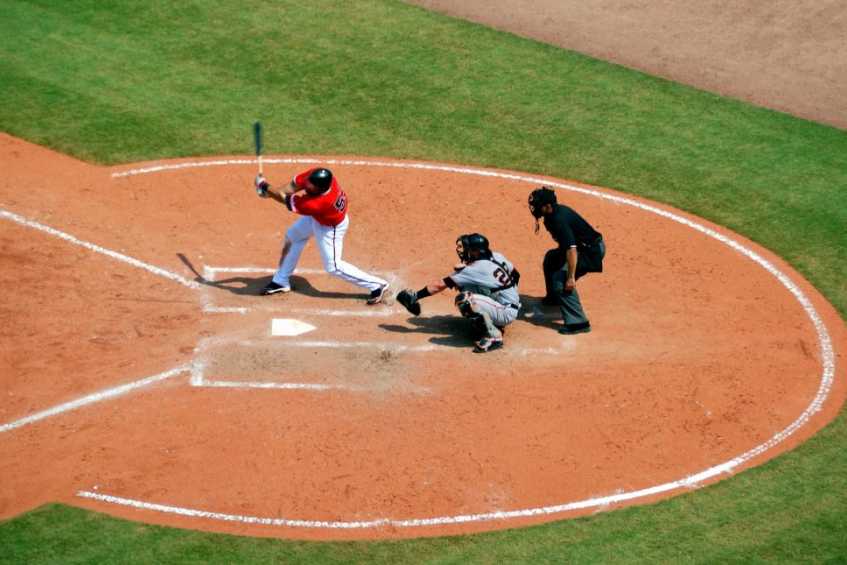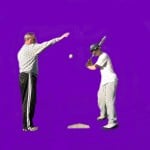
Traditional side toss hitting drill is OK when used as a warm up tool, but it is much overused as a teaching drill. Players with good swings keep their good swings with side toss, but it does little to create better swings for those with swing flaws, unless other hitting props are used. Unfortunately, it is the only drill many coaches seem to know.
No matter how good players are, they swing in miss in games. That is the nature of hitting. When young hitters are hitting every ball in practice, they are not challenged properly. With side toss flips, batters rarely ever miss, unlike in games. Part of the problem is that the minute players swing and miss in practice, coaching panic sets in and coaches believe the player's confidence is ruined for life.
Side toss allows players to get away with long, incorrect actions without ways of correcting it, besides telling players what is wrong. There is no good way of challenging the hitter to be compact and quicker to the ball with the side toss hitting drill, and without adequate challenge, it is difficult knowing when improvement occurs.
With the dropped ball drill, swings and misses are common, until batters have the mechanics, readiness, quickness, and determination to hit balls. This drill gives coaches a chance to make hitting set-up corrections, promotes staying back with the hands, a compact swing, bat quickness, and explosive hip rotation. A hitting drill that can do all those is a pretty darn good drill. Additionally, this drill helps players develop a relaxed body, but aggressive mind, as overanxious players will struggle with this drill.
Performing the drill exactly in this manner is necessary and coaches must be prepared to let players swing and miss for a while. Coaches hold the ball at batters eye level and out front in the hitting zone. Batters stride first and inform the coach they are ready to swing. When coaches do not like player's ready position, post stride, they do not drop the ball and adjust the batter's ready position.
Once players say they are ready and coaches like the batters hitting position, coaches have the prerogative of dropping the ball whenever they like. In this way, players must stay back and somewhat relaxed, but when the ball drops, they must be quick enough with hands and hips to hit the ball squarely. Coaches should not drop the ball at the same time each drop, as players will time it and look good, even without the correct swing.
However, when they do not know when the ball is to drop, they have to be very quick to make good contact. The dropped ball drill allows for little if any hitting mistakes or players will not hit balls squarely, if hitting it at all. Coaches should not flip the ball up nor drop their hand into the hitting zone after releasing it.
Notice, our first hitter has a tendency to wind up and wrap the bat with regular hitting and side toss hitting drill, but with the dropped ball drill, she is able to work from a more compact swing position at set up.
Notice with our second hitter, she does not drop the barrel of the bat before swinging as she does with her regular swing. As her hips begin to open quicker on subsequent drops, she begins to square the ball up.
In order to prevent players from getting away with scooping the ball off the ground, adding a tee behind and at hip level helps them understand the compact swing idea. With older experienced players, dropping balls from lower than eye level is even more challenging, but coaches should never drop balls above eye level to make it easier.
Of course, there are no overnight solutions to hitting problems, but the dropped ball drill is a better alternative to side toss flips for helping players understand their hitting problems and for working on those. It's time coaches challenge hitters, stop using so much side toss and stop being afraid of seeing players miss a few balls.
After playing major league baseball, Jack Perconte has taught baseball and softball since 1988 and offered valuable coaching training too. He has helped numerous youth players reach their potential, as well as having helped parents and coaches navigate their way through the challenging world of youth sports. Jack is one of the leading authorities in the areas of youth baseball training and coaching training advice.
All Jack Perconte articles are used with copyright permission.There are 0 comments on "The Case Against Side Toss Hitting Drill"
CameronPugh says:
"Such a unique perspective on the game..."
On Such a unique perspective on
chandler allen says:
"Hi my name is chandler, i’ve enjoyed..."
On Wanting to tryout for summer ball. as an 18 year old
david graham says:
"With no current MLB team in Canada,..."
On With no current MLB team in